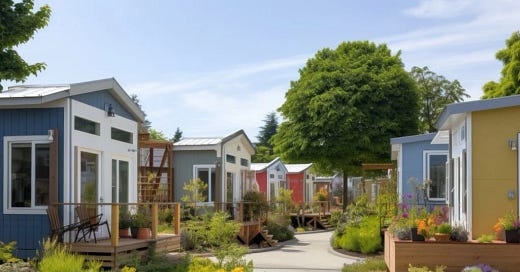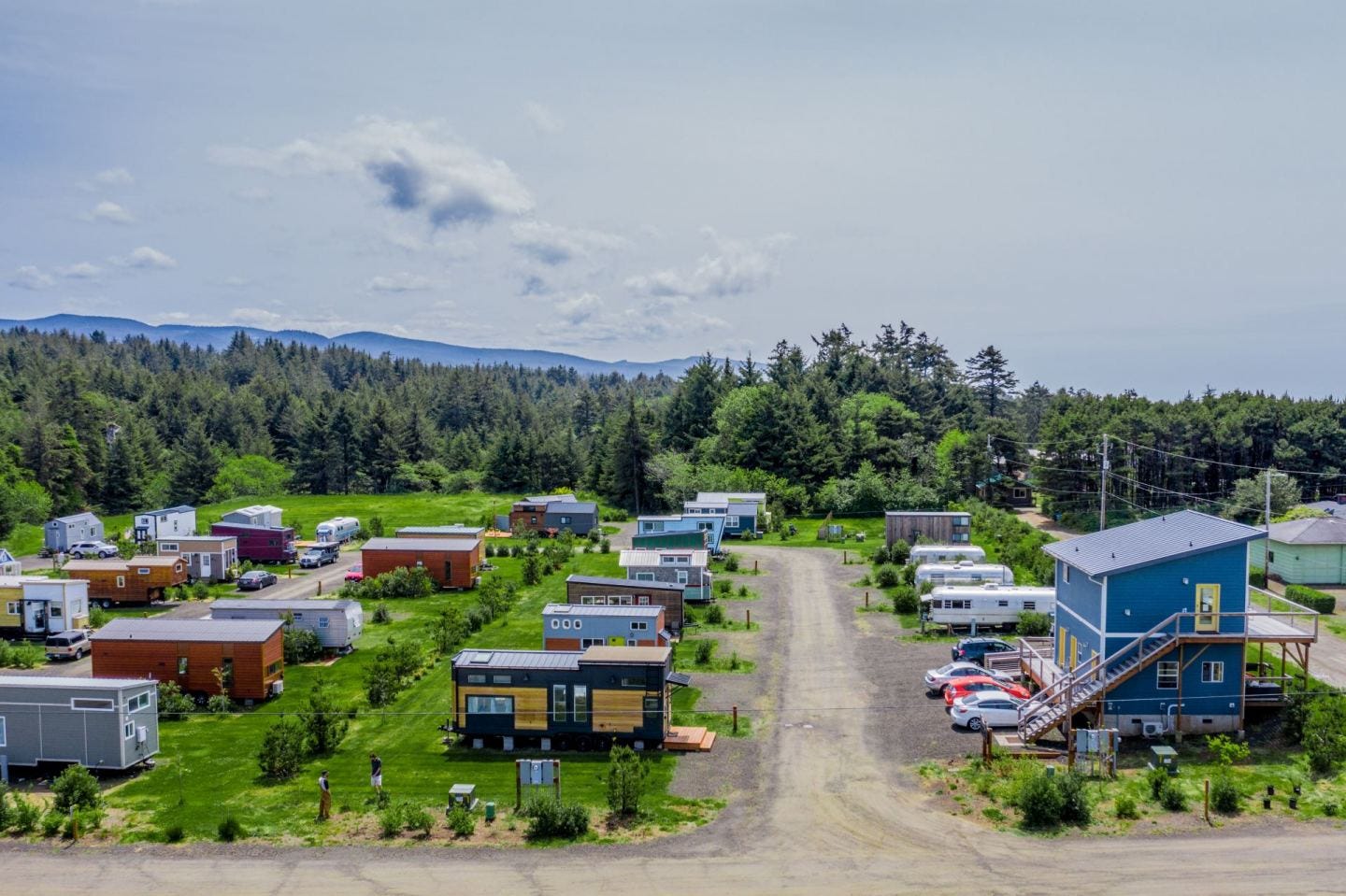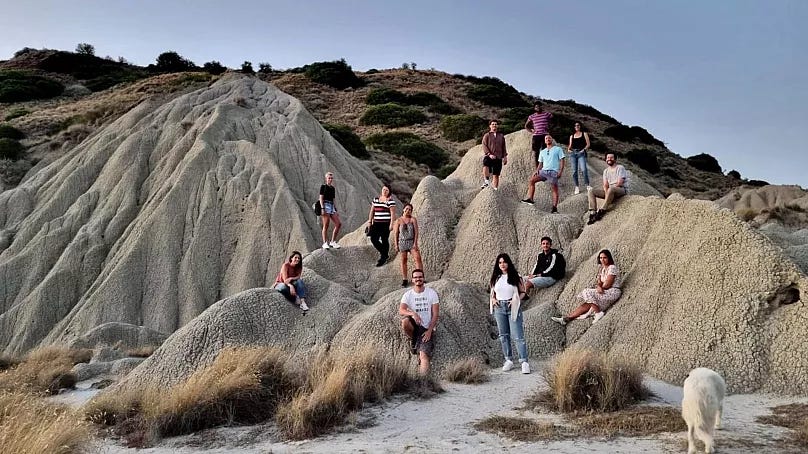In the age of remote work and slow living, a new kind of lifestyle is taking root: tiny house villages designed with digital nomads in mind. These micro-communities offer more than just downsized dwellings—they provide fully-equipped, intentional spaces where like-minded travelers can live, work, and connect.
While the allure of the minimalist "tiny house" has captured imaginations globally, the evolution into fully-fledged tiny house villages is what makes this movement especially compelling for nomads. Think multiple self-contained units clustered around shared resources like coworking spaces, communal kitchens, gardens, and outdoor lounges. It’s the best of both worlds: privacy and independence, combined with spontaneous collaboration and social serendipity.
WeeCasa (Colorado, USA): A Pioneer in Tiny Living
One of the most recognizable examples is WeeCasa Tiny House Resort in Lyons, Colorado. With 22 unique tiny homes of varying styles and layouts, WeeCasa offers a glimpse into what small-footprint living can look like on a community scale. Each home ranges from 165 to 400+ square feet and shares amenities across the resort, nestled beside a creek and walking distance from the charming town center.
Digital nomads report that while the living quarters are small, the real value comes from the shared outdoor spaces, fire pits, riverside hammocks, and picnic tables turned pop-up coworking zones. As one guest told Business Insider, "Two nights was great—but I missed having a door I could close."
Nomad Village Raleigh (North Carolina, USA): Co-Living 2.0
A newer concept tailored explicitly for the digital workforce is Nomad Village Raleigh, which blends 30 high-end tiny homes with a luxurious shared mansion. The mansion includes a coworking hub, fitness center, pool, and social spaces. Here, the tiny homes serve as private sanctuaries while the shared infrastructure enables networking and collaboration.
It’s not just a place to live—it’s a place to thrive professionally and socially.
Mt. Hood Tiny House Village (Oregon, USA): Mountain Living, Minimal Footprint
Mt. Hood Village in Oregon offers six distinct tiny homes set against a stunning alpine backdrop. Though smaller in scale, it captures the essence of community with shared trails, hot tubs, and campfire zones that invite casual connection.
While perhaps more vacation-focused, Mt. Hood has become a pit stop for remote workers craving nature and a change of pace.
Joshua Tree Acres (California, USA): Desert Vibes & Digital Connection
This curated community of Airstreams and tiny houses in the high California desert Joshua Tree Acres offers serene sunsets and shared amenities like a communal kitchen and open-air cinema. Designed for the creative nomad, it’s a magnet for freelancers, designers, and startup founders looking to unwind and recharge.
Digital Nomad Village (Madeira, Portugal): Not Tiny, But Communal
While not a tiny house village per se, Digital Nomad Village in Madeira deserves mention. This government-backed initiative turned Ponta do Sol into a living laboratory for nomad communities. Locals opened homes and infrastructure was upgraded with fiber internet, coworking spaces, and events.
This points to a broader European trend: reviving depopulated villages as nomad towns. The architecture may not be "tiny," but the principles of intentionality, community, and slow living align strongly with the tiny village ethos.
Tursi Digital Nomads (Italy): Monasteries to Micro-Hubs
In southern Italy, the hilltop village of Tursi is reimagining its historic monastery into a coworking space and inviting remote workers from across Europe. Euronews covered how this initiative isn’t just about tourism—it’s about long-term habitation and mutual benefit. Residents and nomads alike co-create events, farm cooperatives, and local businesses.
Again, this isn’t a tiny house model in the physical sense, but it shares many of the values and outcomes. Think of it as the "European remix."
So What Makes a True Tiny House Village for Nomads?
Not every collection of cabins or converted homes qualifies. To be considered a "tiny house village for nomads," we’re talking about:
Multiple self-contained units (usually under 400 sq ft)
Shared amenities (coworking space, kitchens, laundry, etc.)
Designed or adapted with remote work in mind (fast Wi-Fi, private desks, zoom pods)
Community-focused design (gathering areas, events, communal meals)
Accessible surroundings (nature trails, nearby towns, local experiences)
From the forests of Oregon to the coastlines of Portugal, these villages are springing up like mushrooms after the rain. And they're rewriting what "home" can look like for modern nomads.
The Future Is Small, Together
As housing costs rise and the desire for autonomy grows, tiny house villages offer an elegant, eco-conscious solution. But more than that, they represent a mindset shift: that comfort doesn’t require scale, that luxury can be low-impact, and that community is worth downsizing for.
Whether you're drawn to the wilds of Colorado, the deserts of California, or the vineyards of Southern Italy, chances are there's a tiny village waiting for you—with a hot coffee, solid Wi-Fi, and a story to share around the fire.
Have one to recommend? NOMAG is all ears.
While tiny houses are undeniably charming—often appearing in dreamy Airbnb listings across the globe—digital nomads should look beyond aesthetics. It’s essential to find or create communities that support not only lifestyle but also work, connection, and integration with local life.
Our partner, ITS ITALY, is actively working to regenerate entire towns across the Italian peninsula. Their approach goes beyond refurbishing homes: they are developing coworking spaces, local services, and infrastructures to support not just tourists, but long-term temporary citizens and digital nomads. These initiatives offer housing solutions ideal for those looking to stay longer and engage deeper with place and people.
Photos and links throughout by courtesy of WeeCasa, Nomad Development, Euronews, Business Insider, and local community initiatives.








